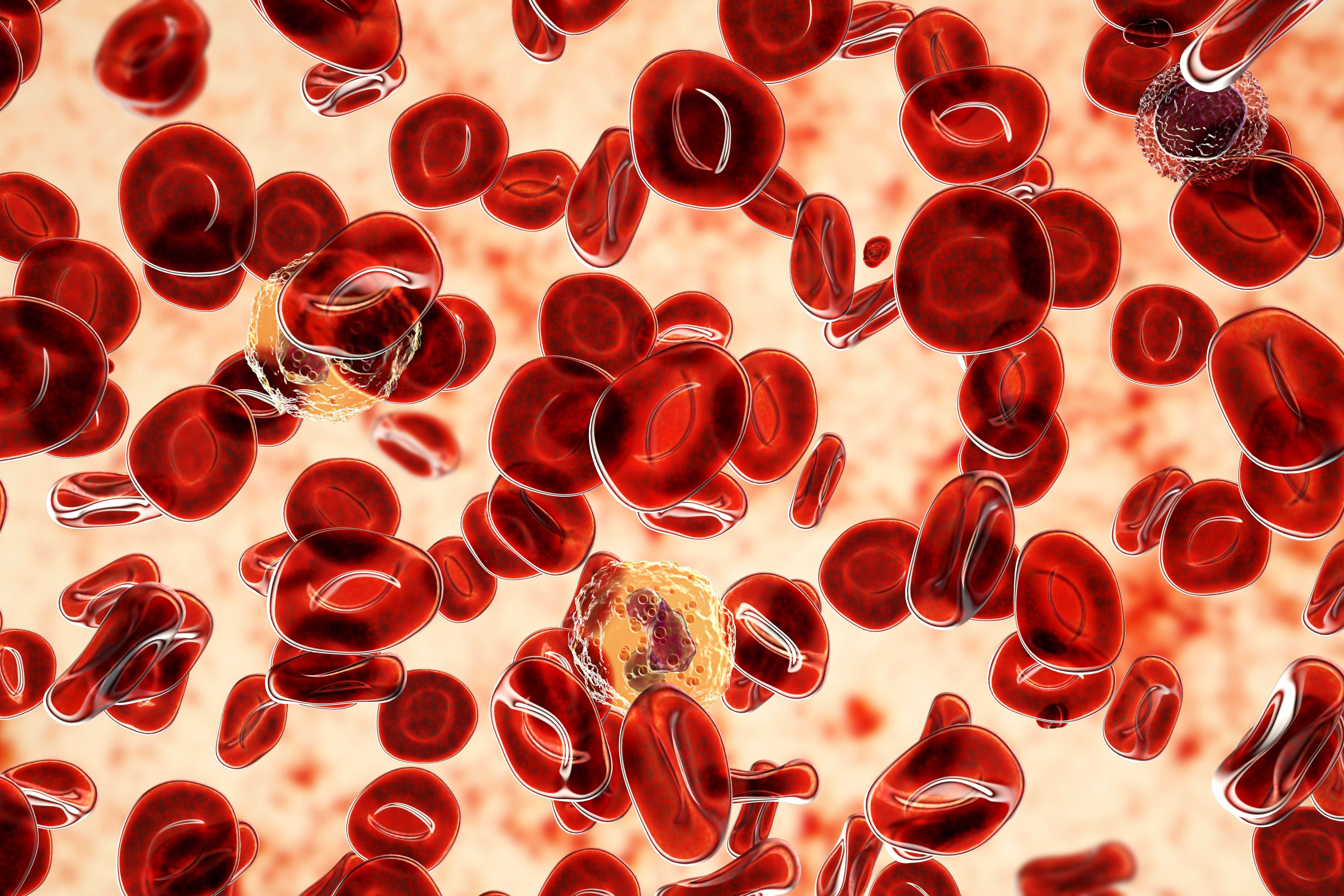News
Article
Lower Pharmacy Costs Give Ruxolitinib Edge for Patients With MF and Anemia
Author(s):
Key Takeaways
- Momelotinib's higher pharmacy costs outweigh its clinical benefits and lower transfusion costs compared with ruxolitinib.
- Ruxolitinib's total cost of care is significantly lower over 6-month, 1-year, and 2-year periods.
Authors found the pharmacy costs for momelotinib were $11,095 higher per month, too much to offset higher transfusion costs for ruxolitinib.
The clinical benefits and lower transfusion costs of momelotinib (Ojjaara) are not enough to offset its higher pharmacy costs compared with an older therapy for patients with myelofibrosis (MF) and anemia who rely on transfusions, according to a recent cost-effectiveness analysis.
The results were presented in a poster at the 16th International Congress on Myeloproliferative Neoplasms, held in Brooklyn, New York, October 24-25, 2024.1
Aaron T. Gerds, MD, MS | Image Credit: Cleveland Clinic

Led by Aaron T. Gerds, MD, MS, assistant professor of Medicine, Cleveland Clinic Taussig Cancer Institute, the authors presented data based on a predictive model that computed per-patient total cost of care for 6-month, 1-year, and 2-year periods, comparing the Janus kinase (JAK) inhibitors ruxolitinib (Jakafi), and momelotinib (Ojjaara). Both inhibit the JAK/STAT pathway, with momelotinib additionally targeting a pathway that can result in improved iron-restricted anemia.
As the poster authors stated, ruxolitinib is indicated for patients with intermediate- or high-risk MF, including those with primary MF, post-polycythemia vera MF, post–essential thrombocythemia MF. Momelotinib is indicated for patients with intermediate- or high-risk MF, including those with primary MF, post-polycythemia vera MF, and post–essential thrombocythemia MF in in adult patients with anemia.1
The SIMPLIFY-2 study showed that patients switching from ruxolitinib to momelotinib took less time to achieve transfusion in dependence.2
This analysis presented in Brooklyn was based on the SIMPLIFY-1 study, which compared ruxolitinib and momelotinib in patients who had not previously received a JAK inhibitor.3 The authors, many of whom worked SIMPLIFY-1, found that the difference in pharmacy costs is $11,095 per month, with momelotinib being more expensive. Although transfusion costs for ruxolitinib were projected to cost an additional $10,854 over a 6-month period, the total cost of care still favored ruxolitinib, Results were as follows:
- At the 6-month mark, the total cost of care favored ruxolitinib by$46,388.
- At the 1-year mark, the total cost of care favored ruxolitinib by $84,239.
- At the 2-year mark, the total cost of care favored ruxolitinib by $144,539.
Assumptions in the model. Authors wrote that the model assumed patients remained on therapy for the entire duration of the study or until death. It was limited to pharmacy- and transfusion-related costs, “to isolate costs associated with reductions in transfusion; other costs of care were assumed similar between ruxolitinib and momelotinib.”
Costs were sourced from a claims analysis. Pharmacy costs were based on dosing from product labels and acquisition costs listed in the Micromedex Red Book. The authors also presented some alternative transfusion scenarios to provide other cost examples.
Limitations. The authors wrote that although they lacked precise estimates for transfusion costs, all alternative scenarios “consistently resulted in cost savings with ruxolitinib.”
Also, the model did not incorporate other clinical benefits associated with ruxolitinib or momelotinib, “such as spleen response rate.”
The authors concluded that pharmacy costs for ruxolitinib remain favorable, “despite higher overall survival rates compared with momelotinib, which increase total pharmacy costs due to longer drug exposure.”
They noted that, “Higher transfusion independence rates among momelotinib patients drove the differences in transfusion costs but did not offset the larger reduction in pharmacy costs with ruxolitinib.”
Reference
- Gerds AT, Yu J, Tao C. Cost comparison of ruxolitinib and momelotinib in patients With myelofibrosis and anemia. Presented at: 16th International Congress on Myeloproliferative Neoplasms, held in Brooklyn, New York, October 24-25, 2024. Abstr 125.
- Harrison, C.N., Vannucchi, A.M., Recher, C. et al. Momelotinib versus continued ruxolitinib or best available therapy in JAK inhibitor-experienced patients with myelofibrosis and anemia: subgroup analysis of SIMPLIFY-2. Adv Ther. 2024;41:3722–3735. https://doi.org/10.1007/s12325-024-02928-4
- Mesa RA, Kiladjian JJ, Catalano JV, et al. SIMPLIFY-1: a phase III randomized trial of momelotinib versus ruxolitinib in Janus kinase inhibitor-naïve patients with myelofibrosis. J Clin Oncol. 2017;35(34):3844-3850. doi: 10.1200/JCO.2017.73.4418.





